By Bob Difley
 Just knowing that you can legally boondock almost anywhere on public lands, such as those managed by the forest service and BLM, as I wrote in last week’s post, does not tell you exactly how to find these dispersed campsites (meaning not within the confines of an organized campground).
Just knowing that you can legally boondock almost anywhere on public lands, such as those managed by the forest service and BLM, as I wrote in last week’s post, does not tell you exactly how to find these dispersed campsites (meaning not within the confines of an organized campground).
You won’t find any signs saying “Campsite Here” or numbered posts designating campsites. No hosts in golf carts will lead you to an open site. No, you have to find them for yourself. Since finding dispersed campsites is more difficult than finding campgrounds, it is one of the features that makes boondocking attractive–there won’t be a lot of RVers competing for the same campsite.
First, become alert so that you notice when you enter public lands. You will recognize national forests or national recreation areas by their familiar brown signs (photo below). Seldom, however, will signs identify BLM lands. Much of the land in the Southwest used by snowbirds in winter is BLM land.
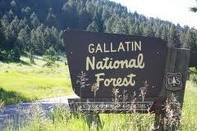
Maps are available from visitor centers in states that contain public lands and on the Public Lands website where shaded areas define lands managed by the BLM, Bureau of Reclamation, National and State Forest Services, Fish and Wildlife Service, Indian Reservations, etc. However, the BLM and some other agencies do not necessarily post signs so you can determine when you enter and leave. Sometimes the only way you can recognize when you are on public land is the absence of “No Trespassing” signs, mailboxes at side road junctions, and locked gates.
Lacking these, go for it. Even if you see a gate, but it is not locked, it is OK to enter. The gate is to keep cattle from straying off the land. Just be sure to close it once you enter. Many of these public land side roads were originally built to support logging and cattle trucks, and are therefore substantial enough to support your rig–as long as they have been maintained.
 Train yourself to focus on spotting side roads when crossing public land, even if you are not currently looking for a campsite. Save the location (photo left) to your GPS or indicate it on a paper map for next time you pass through and may need a campsite. Not all roads will yield acceptable campsites, but by spotting certain characteristics, you can make an educated guess whether you will find one.
Train yourself to focus on spotting side roads when crossing public land, even if you are not currently looking for a campsite. Save the location (photo left) to your GPS or indicate it on a paper map for next time you pass through and may need a campsite. Not all roads will yield acceptable campsites, but by spotting certain characteristics, you can make an educated guess whether you will find one.
Pass by roads with these features: narrow or winding road; overhanging tree branches; deep ruts; soft, sandy, or muddy road surface; debris on road; road soon climbs a hill or drops into a canyon; cattle on road; bears picking blueberries. Look for these signs: wide, level road (photo below); clear overhead; evidence of use by large vehicles; turn around room; large, level parking (potential campsites); other boondockers.
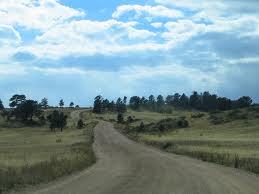 You may not be able to spot all the positive signs from the main road. If not, walk in a ways (the walk will also stretch out your stiff joints from sitting too long) to see how it looks. If it looks like it has potential, I highly recommend that you unhitch and drive your tow or toad in to locate a spot. Once you find one, return to retrieve your rig and move to the site.
You may not be able to spot all the positive signs from the main road. If not, walk in a ways (the walk will also stretch out your stiff joints from sitting too long) to see how it looks. If it looks like it has potential, I highly recommend that you unhitch and drive your tow or toad in to locate a spot. Once you find one, return to retrieve your rig and move to the site.
This may seem like a lot of work for a single overnight spot, but with a little experience you will begin to recognize those roads that are likely to have campsites, and walking in a hundred yards or so will often find you an acceptable overnight spot. Then make a record of the spot for the next time through. You may think you will remember it, but short term memory is an indicator that you’re not getting any younger.
For longer boondocking stays, find a suitable spot for the first night, even at an organized campground, then explore the next day (pick up maps from the local office of the management agency) so you can find a spot far enough off the access road that you can’t hear the traffic, or beside a stream, or in a wildflower covered meadow. For several days of camping, it is worth expending a bit more time and effort to find the perfect campsite.
Check out my website for more RVing tips and destinations and my ebooks, BOONDOCKING: Finding the Perfect Campsite on America’s Public Lands, Snowbird Guide to Boondocking in the Southwestern Deserts, and 111 Ways to Get the Biggest Bang out of your RV Lifestyle Dollar.
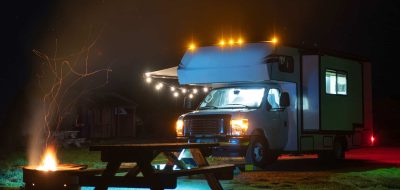
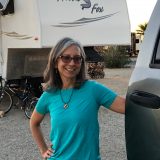
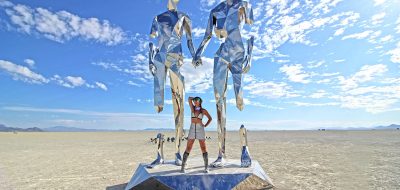

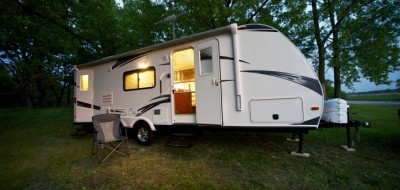

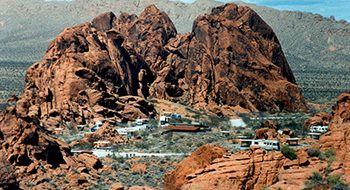
NoNo Hair Removal
Thanks for all your efforts that you have put in this very interesting content.
natural colon cleanse
I do consider all of the concepts you have presented for your post. They are very convincing and can certainly work. Still, the posts are very brief for newbies.
colon cleansing
Stumbled into this site by chance but I’m certain glad I clicked on that link. You genuinely answered all of the questions I’ve been dying to answer for some time now. Will really occur back for more of this. Thank you so much
privatlån
I think other web site owners should take this site as an model – very clean and great style and design, in addition to the content. You’re an expert in this topic!
lån direkt på nätet
It’s in point of fact a nice and helpful piece of information. I’m happy that you simply shared this helpful information with us. Please keep us up to date like this. Thanks for sharing.
ZQuiet
I must admit that your post is very appealing. I have spent lots of my free time reading your content. Thanks for sharing!
Agencja reklamowa
I think that is one of the so much important info for me. And i am glad reading your article. But should observation on some common things, The web site taste is ideal, the articles is in point of fact nice : D. Good task, cheers
sms lån snabbt enkelt
I think other site proprietors should take this web site as an model – very clean and fantastic style and design, not to mention the content. You’re an expert in this area!
William Fincher
In the east San Diego area, like anza borrego state land the signs posted do stay on the desnignated roads, park and camp in the areas posted.This sounds like alot of restrictions, but really not so bad due to the miles of preserved land available.And also street legal vehicles on the highways and on the dirt roads.This is the way to camp if we love the open way of the land, and no expectations of off roading with quads and dirt bikes.But pull the jeep out of the toyhauler,and its on.Happy trails!
Artful RV Adventurer
It’s hard to beat the four corner states of Colorado, New Mexico, Utah (especially, Utah) and Arizona for boondocking. Utah can even be a year round camping state as the southwest corner has moderate climate and there is so much to do and see around there within a half day’s drive.
Too bad about the upcoming restrictions in n. california… a great place to summer.
mark
hoppe
Skip
I feel your pain. It’s my pain as well.
Here in Colorado, we suffer the damage done by the unrestricted ‘use’ of off road vehicles. The erosion in some places results in areas that resemble the ‘badlands’. The damage is in the same class as the abandoned mining sites, or worse.
I must add however that the ‘one vehicle length’ is excessive and should be loosened in some fashion to reflect the somewhat lesser footprint of camping. I’m afraid that a certain amount of the ‘concern’, is due to the CG operators wanting to force people into their clutches, by restricting the Dispersed Camping, as well.
Skip Kelly
Hey Bob…
Just a little heads up. Several, and more than likely eventually all USFS controlled public lands are being “slammed to public access. In the northeastern corner of Ca., all cross-country travel other than on approved roads is being prohibited. Even for the purpose of woodcutting—with a valid permit— one’s vehicle cannot be off an “approved Forest Service road more than the total length of that vehicle. In other words, if my vehicle is 20′ long overall, that is the maximum distance we are now allowed off that road. So if you were to pull your RV off the road for an overnite stay and a Forest Service official happened by, you would be at the very least cited for being on “THEIR LAND.”
So much for the signs proclaiming “Your public lands.”